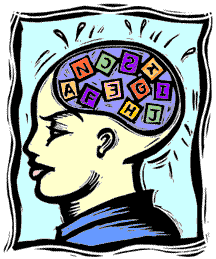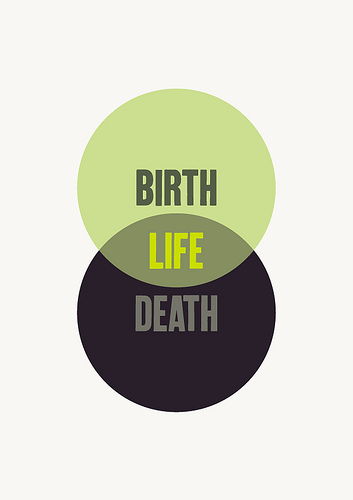Homeschooling a child on the autism spectrum, is not for the faint-at-heart, nor is it for the strong-at-heart. The ability to homeschool children on the autism spectrum is for the one that is willing to envision themselves as "a student of another person's mind". In other words, one must be willing to "look inside" and learn the mind of the ones they teach, as they teach. Taking the time to get to know how a student thinks, relates, processes, and perceives the world around them is very important in the beginning stages of homeschooling. Furthermore, during every lesson one must keep in mind the student on the spectrum may not see, hear, feel, or understand concepts, ideas, and language in the same way they do.
The Power of High Expectations
Our daughter is eight-years old now, and I still find it humorous when someone says to me, "While she was with me, she did not behave inappropriately". I always smile politely and say, "I am very happy to hear that" and I really am. However, when low expectations are all that are required, my little girl will be the most pleasant child you will ever see. Arguably this is the case even for children not on the autism spectrum. High expectations will many times invoke a charged environment. The charge of high expectations may increase problematic behaviors within an academic setting (e.g., avoidance, aversion, anxiety, or frustration). Additionally, if a child also has a learning disability such as dyslexia, then a teacher with high expectations may experience an increase in behaviors that are not conducive for learning. This is why it is very important to know and continuously learn the child's mind. Specifically, it is important to know the deficits and strengths within the child's mind as they relate to each lesson concept and idea. If one begins homeschooling a child on the spectrum without going through the process of learning their mind, one will experience an increase in the student's problematic behaviors and an increase in irritation within themselves. This irritation will further complicate this already complex process.
When I first began homeschooling, I clearly understood (and research had thoroughly revealed) the numerous symptoms associated with autism spectrum disorder (ASD) may be very stressful for parent's during day-to-day tasks, especially aggressive behavioral expressions. There were times when I did not believe I would be able to effectively teach my little girl. This is because I did not know how to teach someone that exhibited low concentration and high distractibility. I did not know how to draw her attention away from her world. Moreover, I did not know how to teach her how to communicate her needs to me in a way that did not include high-pitched, screaming tantrums. I had numerous behavior therapists continuously share with me wonderful ideas and programs that could potentially decrease inappropriate behaviors. However, at that time it was not possible for me to realistically set-up these behavioral programs, while at the same time playing the role of her physical therapist, speech therapist, physical education teacher, music teacher, academic teacher, and mother. I began to feel I was fighting a losing battle, because her aggressive behaviors, poor concentration, and high distractibility began to wear me out.
Always Keep This In Mind
So what did I do? I decided to take the time to build up her school lessons in a way that gradually required more and more of her attention and concentration (much like a behavior therapist would do, accept in ways that flowed into our normal, day-to-day routines). For every lesson objective, I consciously factored in the possibility of slow processing issues, receptive language & expressive communication delays, working memory deficits, and mild dyslexia. Many children on the spectrum are known to have great abilities in some academic areas while there are large gaps in other areas. Using short cuts, skipping basic fundamental skills, and using worksheets to introduce concepts and ideas may cause confusion in the long-term. It is very important to start with the most fundamental component of your lesson objective and slowly build on that. This foundation will prove to be very beneficial if or when your child experiences regression, as mine does.
Many children on the spectrum are concrete thinkers (opposite of myself) and need visual, hands-on activities when learning, especially when first learning a concept or idea. Furthermore, hand-over-hand demonstrations and modeling are two of the most effective ways to teach. For example, my daughter is currently learning how to write on advanced writing paper. Whenever I introduce new sentences, I place my hand on top of her hand and guide her writing. Actually, if I see she is having difficulty with anything, this is always my go-to method. Another example is when we are learning new words, I sound out each word as I write it, (super slow, as if I am learning it myself), repeatedly. It is amazing how much she learns and retains from these two simple instructional methods. One more example is in math. It really helps her complete math problems when we take turns doing the math problems. It is like a game. "You do one, then I do one". This method allows me to see where she is having difficulties and it helps to keep her focused on completing the problems. After a few times of this, I then say, "Ok, now you do two and I do one". I am continuously thinking up new methods on how to break down and build up concepts and subjects in ways my daughter understands.
To Homeschool or Not To Homeschool?
The decision to homeschool is one that requires a lot of thought. I was not a very organized or structured person at the start of this. It has taken a lot of effort, late nights, and mental focus to be where we are now.
Patience is something else I did not possess at the beginning of this process. Without the acquisition of patience, I would not be qualified to teach my daughter because she sometimes requires a long duration of time to respond correctly to a task. Moreover, I found out that breaking down lesson objectives, repetition of specific lesson components, and her working memory deficits required a lot of pure and quiet patience. Patience is actually one of the key attributes to have when homeschooling individuals on the spectrum. I believe the acquisition of this attribute is the main reason we work so well together. It took me a while to get there, but I understand her so much more now.
Learning how to decrease problematic behaviors effectively is another key component in homeschooling successfully. Without learning how to effectively do this, instructional methods such as hand-over-hand and modeling are very difficult to carry out. I use many different ways to bring my daughter's mind and behavior into learning mode. In subsequent posts, I will share some of the most effective approaches I have used to increase her attention and concentration and decrease her aggressive behaviors.
I have had many people tell me they do not understand how I am doing it. I tell them all the same thing, "I am doing it because I can now". At the start of this progressive process, I had absolutely no idea what I was doing, and currently I still fail and learn something new every week. Failures and successes are absolute constants in the progressive process of homeschooling. Take your time!



















